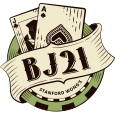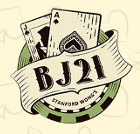What Percent Sports Betting Winners?

Sharp Sports Betting is a tool for those interested in winning money at sports betting. The book explains the most common sports bets, what all the numbers mean, and the mathematics behind the numbers.
Let’s discuss some principles of sports betting. All sports bettors should learn the information below. All other kinds of casino advantage players, including blackjack players of all skill sets, which includes card counters, should also have a good working knowledge of Expected Value.
Winning at sports betting means winning a good percentage of the bets you make; you do not have to win every single bet to make money betting sports. You do have to do better than guessing, because on bets against a point spread you generally must risk $110 to try to win $100.
If you hit 50 percent winners on bets you make at -110, you will lose at the rate of 4.55 percent. The break-even point for bets at -110 is to hit 52.4 percent winners.
Here’s how to figure your percent edge from your win rate, assuming you make bets at -110: Multiply your percentage of winners by 1.91 (which is 21/11), and subtract 100.
If you can predict the winner 53.5 percent of the time on bets at -110, you will enjoy a two percent edge. You will be hitting at the rate that sports-betting pros say is often the documented success rate of sharp handicappers who play a high volume of games against pro and college sides. If you can pay a better price than -110, you can increase your edge.
If you can predict the winner 55 percent of the time on bets at -110, you will enjoy a five percent edge. According to pros, such win rates are achievable in illiquid markets like overnight lines, totals, and props. You will have approximately the same edge over sportsbooks as those books enjoy over people who play random hunches at -110.
If you can hit 57 percent winners at -110, you will be making almost nine percent return on your money invested in sports bets. Years ago, 57 percent was an attainable success rate for the best of the pros, but finding great bets has gotten more difficult in recent years.
If you can hit 60 percent winners, pinch yourself because you are dreaming. You will occasionally find a bet that you believe will win with probability 60 percent, and on such a bet your edge is nearly fifteen percent.
If someone tells you he can hit 70 percent winners and you should pay him for his picks, hang onto your wallet because he’s lying about the 70 percent.
Estimating Your Edge
Keep in mind that whatever number you come up with is only an estimate. Occasionally the linesmaker will know things that you do not know. Therefore your edge as calculated by these methods is more likely to overstate your actual edge than to understate it. When you are deciding how much to bet, act as if your edge is less than the amount you have calculated.
The Big Concern
The big concern in money management is getting an edge. If you think you are good at picking winners but the truth is you would be better off throwing darts at a board, then all the discussion above about what percentage of your bankroll to bet does not apply to you. Money management is not a substitute for picking winners. If you do not pick enough winners to overcome the sportsbook’s vig, then your optimal bet size is zero, period. Money management cannot win money for a handicapper who can’t pick winners.
Sometimes sports bettors who go broke put the blame on poor money management. That’s nonsense. If you lose your bankroll betting sports, it will be because you do not pick more than 52.4 percent winners. After you start picking winners, then money management can help you grow wealthier than if you simply made flat bets.
Sample Problems
For all of these problems, assume a MinWin of $100 and a MinEdge of five percent.
Problem 1
You think a prop meets your MinEdge and the odds are 10:1. How much should you bet?
Problem 2
You think a prop meets your MinEdge and the terms are -1200. What is your optimal bet size?
Problem 3
You have a pick that you think carries a twenty percent edge, but it’s a bet that pays 5:1. What is your optimal bet size?
Problem 4
You find Minnesota at 50:1 to win the Super Bowl, and you think the odds should be less than half that, so you figure your edge is about 100 percent. That’s twenty times your MinEdge. What is your optimal bet size?
Problem 5
The typical two-team parlay pays 13:5. For a MinWin of $100 and a two-team parlay that promises the MinEdge, how much should be wagered on the two-teamer?
Problem 6
The typical three-team parlay pays 6:1. For a MinWin of $100 and a three-team parlay that promises the MinEdge, how much should be wagered on the threeteamer?
Solutions to Sample Problems
These solutions assume a MinWin of $100 and a MinEdge of five percent.
Problem 1
You think a prop meets your MinEdge and the odds are 10:1. How much should you bet? Bet 1/10 of the MinWin, or $10 to try to win $100.
Problem 2
You think a prop meets your MinEdge and the terms are -1200. What is your optimal bet size? Mathematics justifies betting up to $1200 to try to win $100. But you don’t have to bet that much if you won’t be able to sleep with $1200 at risk, or won’t be able to sleep after losing $1200.
Problem 3
You have a pick that you think carries a twenty percent edge, but it’s a bet that pays 5:1. What is your optimal bet size? The ratio of the bet to the win is 1/5, which says to bet 1/5 of the MinWin. Twenty percent edge is four times the MinEdge, which says bet to win four times that much. Multiplying four times 1/5 yields a bet size of 80 percent of the MinWin. Thus the optimal bet size is $80 to try to win $400.
Problem 4
You find Minnesota at 50:1 to win the Super Bowl, and you think the odds should be less than half that, so you figure your edge is about 100 percent. That’s twenty times your MinEdge. What is your optimal bet size? Multiply your MinWin by 20 to reflect your huge edge, and then divide by 50 to reflect the odds on the bet. The result is to bet an amount equal to 40 percent of your MinWin, or $40 to try to win $2000.
Problem 5
The typical two-team parlay pays 13:5. For a MinWin of $100 and a two-team parlay that promises the MinEdge, how much should be wagered on the two-teamer? Divide your MinWin by 13/5 to reflect the odds on the bet. The answer is to bet an amount equal to 5/13 of your MinWin, or about $40 to try to win $104.
Problem 6
The typical three-team parlay pays 6:1. For a MinWin of $100 and a three-team parlay that promises the MinEdge, how much should be wagered on the three-teamer? Divide your MinWin by 6 to reflect the odds on the bet. The answer is to bet an amount equal to 1/6 of your MinWin, or $17 to try to win $102.
This is part of an occasional series of articles.
Excerpted with permission from Sharp Sports Betting by Stanford Wong, edited for this format.











Please log in or register to leave a comment